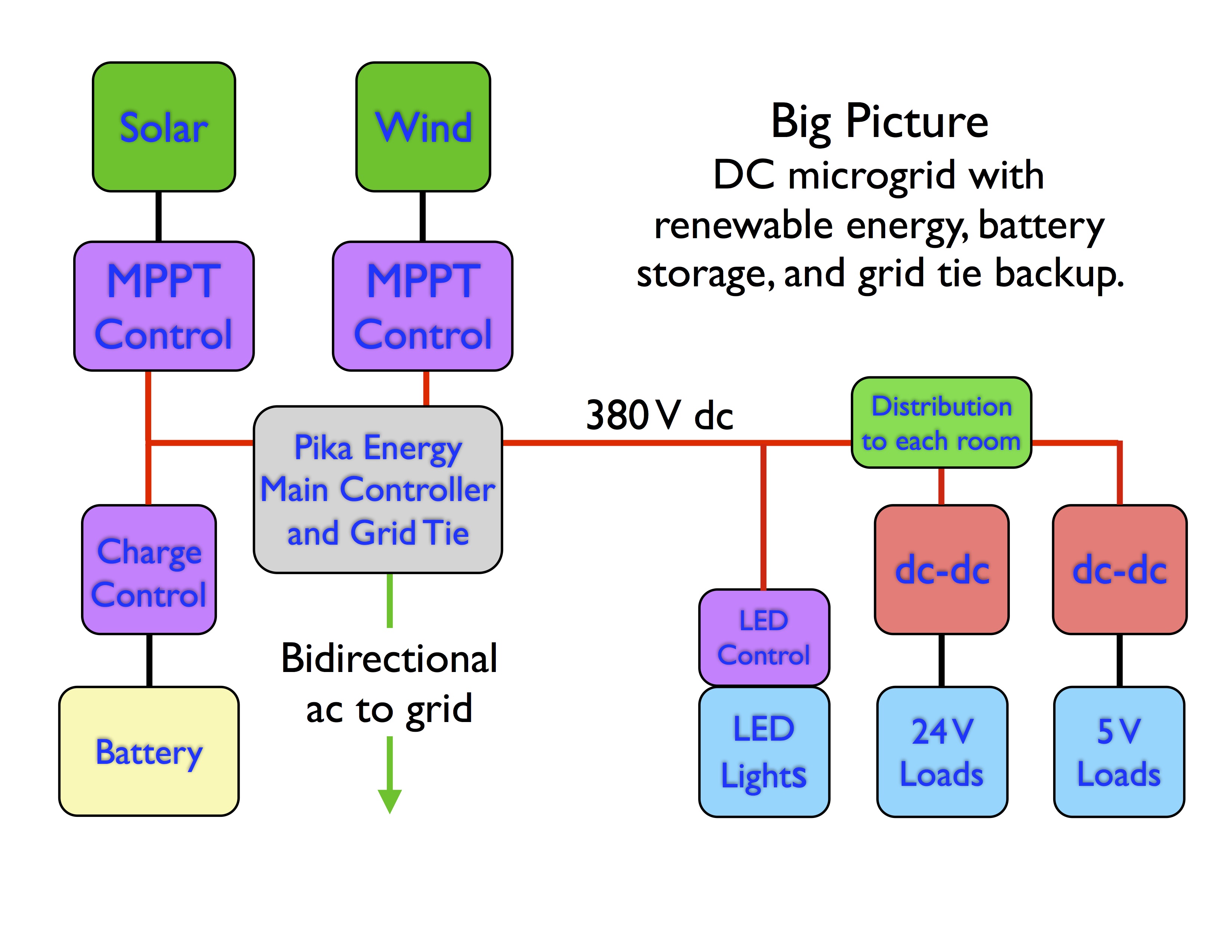The Clark Physics NanoGrid Design
Chuck Agosta - Clark University

One of the difficulties of setting up a dc building system is finding convenient high voltage dc switches. Turning off, or breaking a dc circuit can produce more of an electrical arc than in an ac circuit because there are no periodic zero crossings of current. We have found very few switches on the market, and they tend to be bulky and expensive. One good solution is to use electronic switches. An inexpensive LED coupled MOSFET switch by xxx is one example. These electronic switches solve the problem, but require extra electronic hardware and software to implement them in a room design. A picture of the nanogrid control board is shown below with many of the components identified.
Measurement Electronics
A part of the system not in the diagram above is the measurement electronics. Measuring the power moving through every part of the system is very important to be able to analyze the efficiency of all the components and the history of power harvesting and use. Some of the measurement electronics is identified in the picture above. The heart of the system is two LabView USB-6218 measurement modules, each of which can measure 16 channels of voltage up to =- 10 V. They also have some analog and digital output.
- For dc voltage we divide the voltage to below 10 V and directly measure the voltage. None of our measurements change very quickly, so to increase our signal to noise, we sample dc voltages 900 times over 10 seconds, and average the measurement.
- For ac voltage we divide the voltage to an absolute value below =- 10 V and sample the sine wave at 1000 Hz for four seconds. We then use a LabVeiw vi to calculate the rms voltage.
- For dc current we use LEM current monitors which are based on toroidal coils and a Hall effect chip.
- For ac current we use either the same LEM current monitors that we use for dc measuerents, or a standard toroid current monitor and again use a LabVeiw vi to calculate the rms voltage, which is in turn proportional to the rms current.
In all cases we are experimenting with signal processing to increase the signal to noise performance. Particularly for the ac current measurements this is very important. At low curents there is lots of noise in the system, and a simple rms algorithm finds the rms of all frequencies. We have use digital filtering to decrease the bandwidth of the measurement, or FFTs to pick out only the amplitude at 60 Hz. We are still looking for the mose robust method.
A live webpage to see the status of the nanogrid shows a small fraction of the data that is collected for analysis. In a collaboration with the computer science department a group of students have also made a web based data browser and a machine learning engine that predicts the available solar energy for te next day based on NOAA cloud cover forecasts and previous data.
- For dc voltage we divide the voltage to below 10 V and directly measure the voltage. None of our measurements change very quickly, so to increase our signal to noise, we sample dc voltages 900 times over 10 seconds, and average the measurement.
- For ac voltage we divide the voltage to an absolute value below =- 10 V and sample the sine wave at 1000 Hz for four seconds. We then use a LabVeiw vi to calculate the rms voltage.
- For dc current we use LEM current monitors which are based on toroidal coils and a Hall effect chip.
- For ac current we use either the same LEM current monitors that we use for dc measuerents, or a standard toroid current monitor and again use a LabVeiw vi to calculate the rms voltage, which is in turn proportional to the rms current.